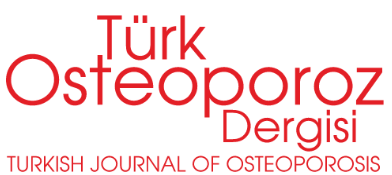Introduction
Stress fractures are defined as a partial or complete fracture of bone due to an inability to endure a non-violent stress. They may be subdivided into two types: fatigue and insufficiency. Fatigue fractures occur in bone subjected to submaximal stress loads, such as in athletes or recruits. Insufficiency fractures occur in previously weakened bone under physiologic stress such as post arthroplasty or cruciate ligament reconstruction (1,2). Two theories have been proposed to explain the aetiology of stress fractures: muscle fatigue, and direct muscle action. Muscle fatigue reduces its ability to absorb shock and increases local stress. Conversely, muscle contraction creates a repetitive stress on the bone (1,2). We want to point to third factor with our case report: Osteoporosis. We describe an unusual case of young military recruit with simultaneous bilateral stress fractures of the proximal tibial shaft due to military training and associated with osteoporosis.
Case Report
A 31 year old military recruit presented to the orthopaedic outpatient clinic complaining of bilateral shin pain, associated with intermittent limping gait. These symptoms had been present for duration of one month. His complaints were worse with prolonged activity, walking long distances and running. There was no history of antecedent trauma before the onset of his pain. His past medical history was unremarkable. He stated that his life was sedentary before joining to the army. During the preceding 3 weeks he had been training for the army physical fitness test which includes running 2-3 miles three times a week. Physical examination revealed marked bony tenderness over the posteromedial aspects of both his proximal tibia. Both knees exhibited full range of movements. Neurovascular status was grossly, clinically normal in both lower extremities. Radiographs of his both knees showed linear sclerosis in the proximal tibia (Figure 1). Based on these findings, a presumptive diagnosis of bilateral tibial stress fractures was made; conservative therapy with an mechanical knee support, acetaminophen and bed rest were initiated; and Tc-99m bone scan, MRI as well as blood laboratory studies were requested. The presences of the stress fractures were confirmed by both the Tc-99m bone scan and MRI (Figure 2). Routine laboratory studies, including a complete blood count, erythrocyte sedimentation rate, C-reactive protein, albumin, alkaline phosphatase, total bilirubin, blood urea nitrogen, calcium, creatinine, glucose, phosphorus, serum glutamic-oxaloacetic transaminase, total protein, uric acid and urinalysis were all within normal limits. Bone mineral density (BMD) of the patient was also measured using dual energy X-ray absorptiometry (DXA; Lunar, Madison). According to his BMD measurements, the T-score was -2,5 and -2,8 in L2-L4 lumbar region and femoral neck respectively. Thereafter, all other risk factors for osteoporosis were investigated. There was no evidence of hypogonadism, hyperthyroidism, excessive alcohol intake, smoking, exposure to glucocorticoids or any other risk factor for osteoporosis in his history. The patient began treatment with alendronate and calcium for associated osteoporosis. Serum 25-hydroxyvitamin D concentration and parathyroid hormone level were within normal limits. Twenty-four hour urine specimens were analyzed and the value of calcium excretion/24 h was within normal range. After all investigations, the diagnosis of the patient was bilateral tibial stress fractures due to idiopathic osteoporosis. Follow-up evaluation approximately 8 weeks after the initial visit indicated that the initial therapeutic measures had been helpful, and the patient was free of pain. At the final follow-up 6 months after the initial admission, the patient was completely free of signs and symptoms and had resumed normal physical activity. The radiographs showed the union of stress fractures. BMD returned to normal. The patient gave full informed consent for the publication of his history and imaging details.



